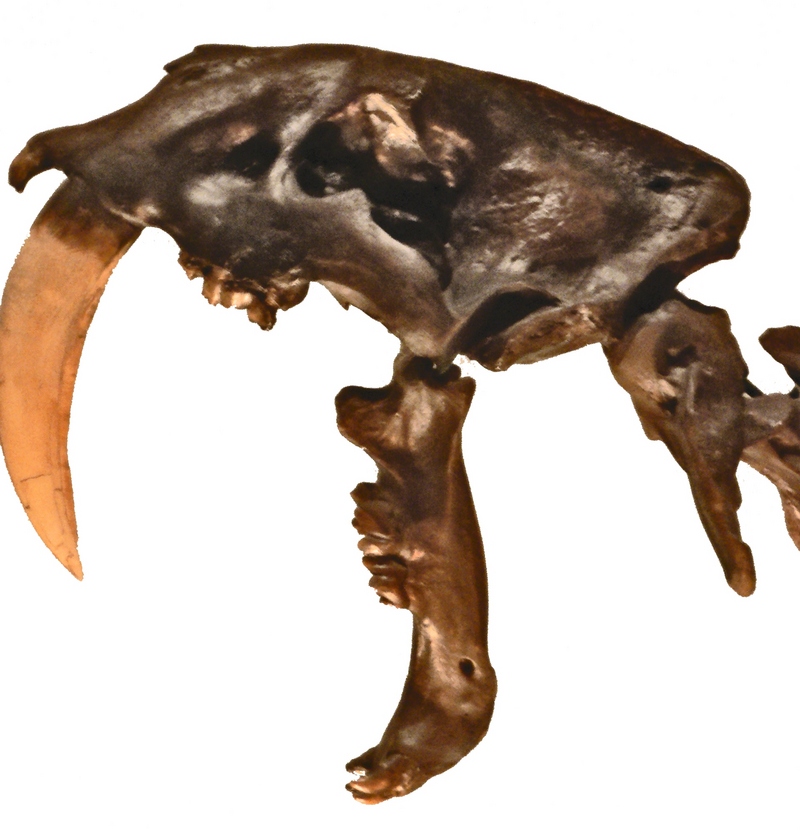Smilodon fatalis - Wiki Smilodon fatalis
From Wikipedia, the free encyclopedia
[Photo] Skull of Smilodon fatalis at Ueno Royal Museum. Photo credit: Peter Halasz. (User:Pengo http://en.wikipedia.org/wiki/User:Pengo )
Smilodon fatalis ("the deadly knife-tooth") is possibly the best-known of the machairodontine saber-toothed cats. It appeared in North America about 1.6 million years ago and later migrated down the west coast of the continent to Peru. It became extinct around 10,000 years ago. Smilodon fatalis ranged in weight from 300 to 450 lb (130 to 200 kg) and ranged in height from 39 to 47 inches (1 to 1.2 m). Their teeth are about 7 in.
Although the saber-toothed cat has no close living relatives, paleontologists reconstruct how the saber-toothed cat looked by comparing its bones with those of large cats living today. Very powerful front legs and a short tail indicate that saber-toothed cats used stealth and ambush rather than speed to capture their prey.
Recent investigations suggest that this saber-toothed cat probably used its long canines to slash through the throat, severing the wind pipe and cutting the jugular. Its teeth were surprisingly delicate and could easily snap off if a prey animal struggled. Its mouth could open up to 120 degrees, whereas its closest living relative, Panthera leo, or lion, can only open its jaws to 65 degrees.
Some fossils show healed injuries or diseases that would have crippled the animal. Some paleontologists see this as evidence that saber-toothed cats were social animals, living and hunting in packs that provided food for old and sick members.
Most saber-toothed cats lived in grasslands, or pine forests with rocky soil. A majority of fossils have been discovered in areas such as these.
The La Brea tar pits in Los Angeles trapped hundreds of Smilodon in the tar, possibly as they tried to feed on mammoths already trapped. There is a museum there today which has many of their complete skeletons.
http://en.wikipedia.org/wiki/Smilodon_fatalis
| The text in this page is based on the copyrighted Wikipedia article shown in above URL. It is used under the GNU Free Documentation License. You may redistribute it, verbatim or modified, providing that you comply with the terms of the GFDL. |
